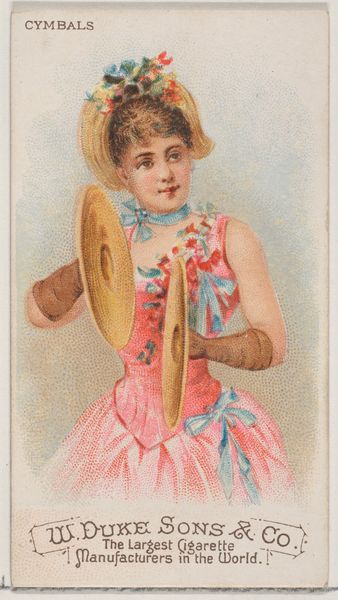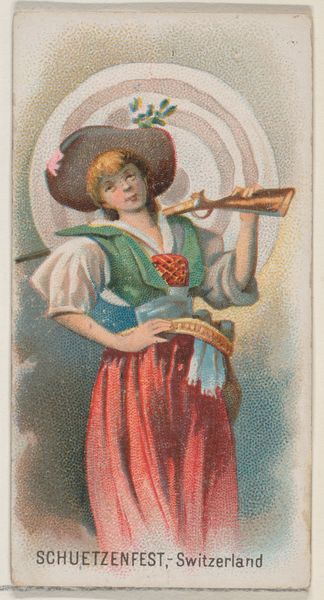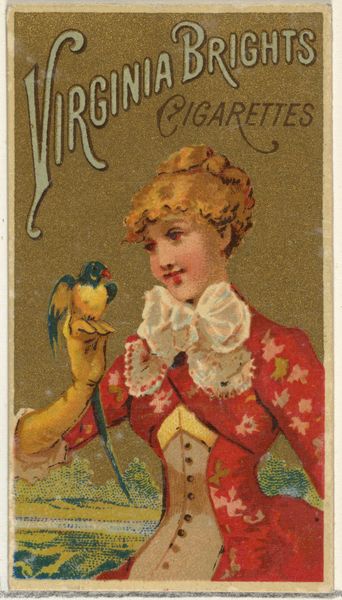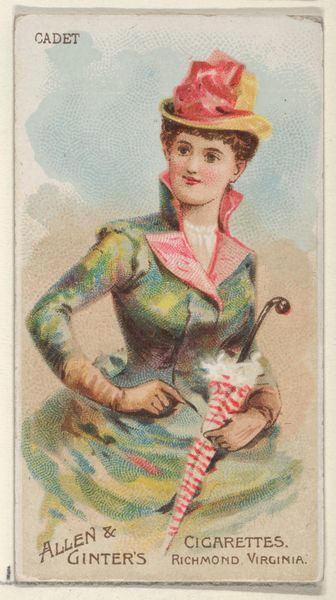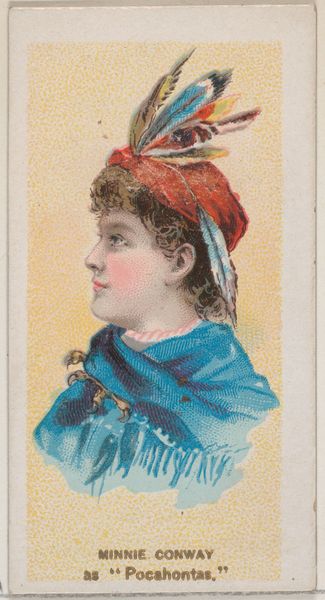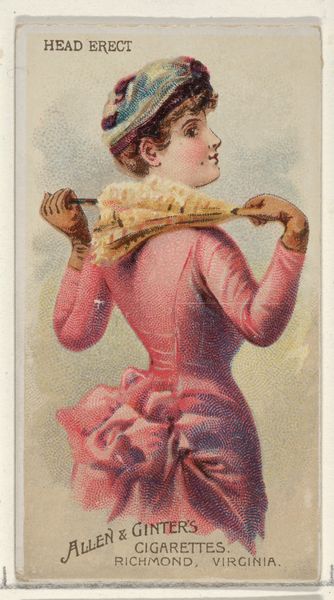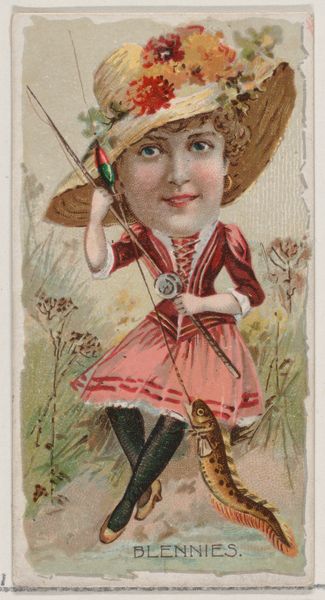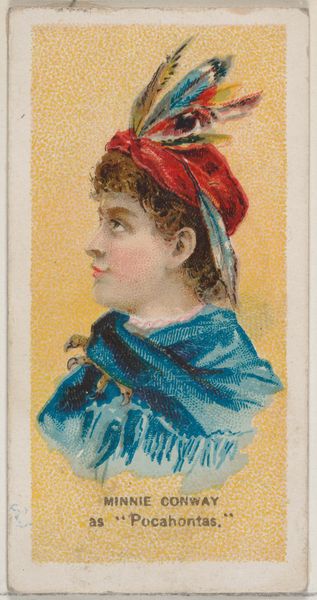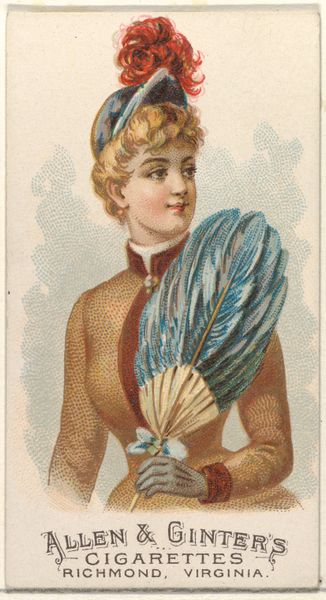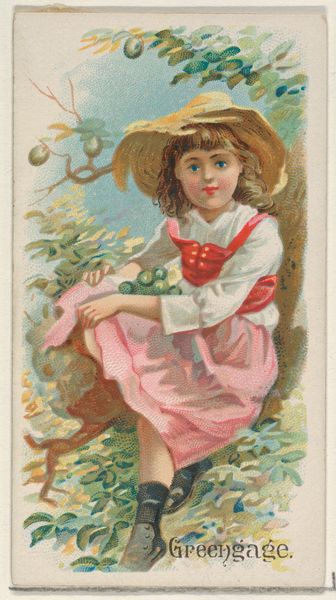
Harmonica, from the Musical Instruments series (N82) for Duke brand cigarettes 1888
0:00
0:00
drawing, print, watercolor
#
portrait
#
drawing
# print
#
impressionism
#
oil painting
#
watercolor
#
watercolour illustration
#
genre-painting
#
musical-instrument
#
decorative-art
Dimensions: Sheet: 2 3/4 x 1 1/2 in. (7 x 3.8 cm)
Copyright: Public Domain
Curator: Immediately, I'm struck by a kind of muted exuberance. There's a softness in the palette, yet a boldness in the subject. Editor: We're looking at "Harmonica," part of the "Musical Instruments series" created in 1888 for W. Duke, Sons & Co., a cigarette brand. It’s currently held at the Metropolitan Museum of Art. These were chromolithographs, printed advertisements included in cigarette packs. Curator: Chromolithographs as a vehicle of capitalist desire– intriguing. It positions working-class leisure as something marketable. Note how this depiction links female presence, fashion, musical entertainment, and access to a consumer product: this woman could be anyone who purchases and supports Duke cigarettes. Editor: It certainly tells us about the branding strategies of the late 19th century. The portrait depicts a young woman in fashionable dress playing a harmonica, complete with puffed sleeves and ornate hat. I imagine that such prints provided ordinary people with access to stylish and “high-class” figures, perhaps generating aspirations. Curator: Right, it presents a very specific narrative of aspiration. This woman is portrayed as independent, perhaps even unconventional, finding joy in an activity coded as traditionally masculine. But how does the consumption of a cigarette normalize the gender roles, making smoking, in particular, more gender-fluid through performative representation? How did these capitalist enterprises begin shifting cultural dynamics that permitted individuals to transgress existing hierarchies, through consumer access? Editor: The social history is fascinating. I agree that such accessible portraiture challenges a strict dichotomy of high/low cultural access; while promoting brand affiliation and aspiration across diverse classes. Consider that a small print like this likely traveled great distances. In effect, this artwork became a point of visual commonality in an increasingly mobile America. Curator: Agreed. This object allows us to question social values concerning production, class mobility, leisure activities, gender roles, and consumerism that converge through an understanding of art as an enterprise that promotes a culture and its product. Editor: Indeed. So much history is packed into these tiny, unassuming artworks. Curator: This is why it is still so powerful today. Editor: Exactly. It holds layers to consider about an important epoch of marketing strategies.
Comments
No comments
Be the first to comment and join the conversation on the ultimate creative platform.
